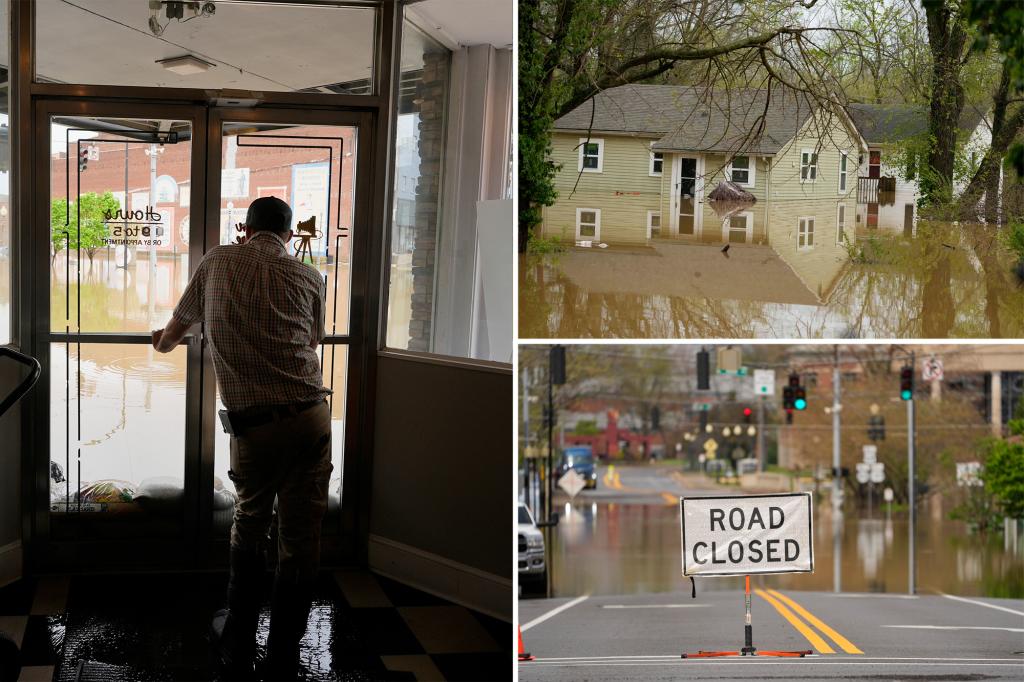Devastation in the Heartland: Tornadoes and Flash Flooding Leave Communities in Ruins
A catastrophic series of tornadoes and flash floods has claimed at least 16 lives and reduced entire neighborhoods to rubble across the central United States this week. Emergency crews continue search-and-rescue operations as states from Texas to Indiana grapple with the aftermath of what meteorologists call a “once-in-a-generation” weather event that displaced thousands and caused hundreds of millions in damage.
Nature’s Fury Unleashed Across Multiple States
The severe weather system began forming on Monday, spawning an unprecedented 38 confirmed tornadoes across eight states within 24 hours. The National Weather Service reported wind speeds exceeding 165 mph in some areas – strong enough to flatten well-built homes and send vehicles airborne. Meanwhile, torrential rains triggered flash flooding that submerged entire towns under several feet of water.
Hardest-hit areas include:
- Valley View, Texas: Where a massive EF-4 tornado destroyed 75% of structures
- Charleston, Missouri: Where floodwaters breached levees and forced mass evacuations
- Southern Indiana: Where multiple tornadoes left 50-mile damage paths
“This wasn’t just a bad storm – it was a meteorological catastrophe,” said Dr. Evelyn Carter, severe weather researcher at the University of Oklahoma. “The simultaneous occurrence of violent tornadoes and extreme flooding created compounding emergencies that overwhelmed local response capabilities.”
Human Toll and Heroic Rescue Efforts
As of Thursday morning, the death toll stands at 16 with over 200 injuries reported. Among the fatalities were three children in Arkansas whose mobile home was swept away by floodwaters. Emergency responders have conducted more than 400 water rescuses using boats and helicopters.
In Kentucky, National Guard troops worked through the night to evacuate residents from rooftops as waters continued rising. “We’re seeing people who lost everything except what they’re wearing,” said Sgt. Marcus Reynolds during a brief respite from rescue operations. “The water came up so fast many didn’t have time to grab medications or important documents.”
Key statistics from the disaster:
- 16 confirmed fatalities across 5 states
- 200+ injuries requiring medical treatment
- 15,000+ homes damaged or destroyed
- 500,000+ without power at peak outages
Climate Connections and Warning System Successes
While tornadoes are common in the region during spring, scientists note this event’s intensity aligns with climate change predictions. “Warmer air holds more moisture, fueling both stronger storms and heavier rainfall,” explained climate scientist Dr. Raj Patel. “We’re seeing these compound extremes with increasing frequency.”
Despite the devastation, meteorologists highlight that advanced warning systems saved countless lives. Tornado sirens sounded with 20-30 minute lead times in most areas, and wireless emergency alerts reached 95% of affected populations according to FEMA estimates.
“The warnings worked exactly as designed,” said NWS meteorologist Sarah Wilkins. “Without that advance notice, we’d likely be reporting hundreds of fatalities rather than dozens.”
Long Road to Recovery Ahead
With floodwaters only beginning to recede, the full extent of damage remains unknown. Early insurance estimates project claims exceeding $1 billion, while agricultural losses could devastate the region’s farming economy. Critical infrastructure including hospitals, schools and bridges suffered severe impacts.
Federal emergency declarations have been approved for seven states, unlocking FEMA resources and National Guard support. Temporary shelters house over 8,000 displaced residents, though many report overcrowding and supply shortages.
Local officials emphasize recovery will take months if not years:
- Debris removal alone may require 60-90 days in hardest-hit towns
- Many schools will remain closed through the academic year
- Key transportation routes could take weeks to reopen
How to Help and What Comes Next
As climate scientists warn of more extreme weather ahead, communities face difficult questions about rebuilding resilient infrastructure. Many flood-damaged homes sat in known floodplains, while tornado-prone areas lacked sufficient storm shelters.
“We can’t just rebuild the way things were,” said urban planner Denise Choi. “This disaster shows we need climate-adaptive design – elevated structures, reinforced safe rooms, and better drainage systems.”
For those wanting to assist, reputable organizations including the Red Cross and local food banks are accepting donations. Volunteers should coordinate through official channels rather than self-deploying to affected areas.
Meanwhile, survivors face the daunting task of rebuilding lives amid unimaginable loss. As Valley View resident Miguel Hernandez surveyed his destroyed home, he reflected: “The material things can be replaced. We’re just thankful our family made it out alive. That’s what matters now.”
See more Your Daily Weather



